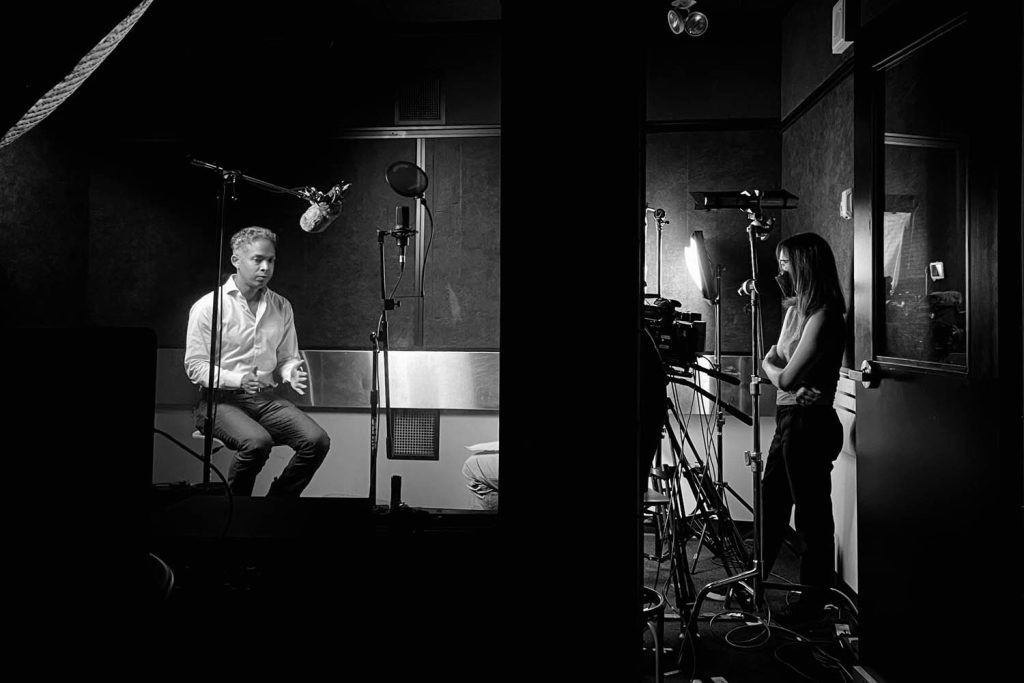Trinidadian-Canadian director Richard Fung talks to Jonathan Ali about his documentary The Enigma of Harold Sonny Ladoo
The writer Harold Sonny Ladoo — born and raised in Trinidad, later domiciled in Canada — had the briefest of careers, and lives. No Pain Like This Body (1973), his first novel — which evokes with high poetry straitened Indo-Trinidadian life in the early 20th century — marked the arrival of a writer of talent. Tragically, Ladoo was murdered at age 28 in a cane field in central Trinidad. A second and final novel, the absurdist comedy Yesterdays (1974), was posthumously released, and recently republished.
In his new documentary, Trinidadian-Canadian filmmaker Richard Fung attempts a reckoning with Ladoo’s life and death. Drawing on a decades-old archive of previously unseen interviews shot by Trinidadian documentarian Christopher Laird with family, acquaintances, and colleagues, The Enigma of Harold Sonny Ladoo presents a shape-shifting lagahoo of a man. Richard Fung spoke with Jonathan Ali about getting to grips with him.
What is it about Harold Sonny Ladoo that makes him worth engaging with today?
I came across Ladoo’s books in the 1970s or 80s and I found them not only riveting but incredibly exciting as novels set in a fictionalised version of Trinidad by an author in Canada. By the time I came to working on the documentary, I still remembered the corporeal discomfort induced by No Pain Like This Body — that endless rain that saturates everything — and the defiant queerness of the villagers in Yesterdays.
But I knew nothing of the man. I learned everything about him from Christopher Laird’s video interviews. What I discovered is that Ladoo’s life and death are every bit as extraordinary as his fiction. He was a brilliant writer but a flawed man, and I tried to convey this without becoming salacious or compromising the people Christopher interviewed.
How challenging was this?
The difficulty with assessing Ladoo the writer vs Ladoo the man is that his depiction of Pa’s violence against Ma and the children in No Pain Like This Body is usually read as a critique of patriarchy. What does it mean that in Pa Ladoo was describing himself? My approach in the film is to provide as many of the accounts as I can and let the viewer decide.
Christopher Laird tried to film No Pain Like This Body. You beautifully invoke that film that never was, through animated renderings of passages from the novel and readings by various writers.
Christopher’s failure to complete the fiction feature film of No Pain was due to lack of funding for live-action drama. This was not an issue for me as I’m not a big fan of dramatisations in documentary. I prefer offering the viewer the skeleton of an image onto which they can create the scene in their imagination.
The authors who appear in the documentary — David Chariandy, Ramabai Espinet, Andil Gosine, Kevin Jared Hosein and Shani Mootoo — all share roots in Indian indentureship and all have some connection to Ladoo and/or the project. Adam Williams, who did the animated drawings, is primarily a ceramic artist and I’ve long admired the drawings on his pieces. I wanted someone familiar with the landscapes and the people of central Trinidad, and Adam has a very Trini naughtiness and wit.
Enigma fits into your long and varied oeuvre as an exploration of an intersectional life, someone who we might characterise as being on the margins of history. What continues to draw you to these stories?
I was a child when television came to Trinidad & Tobago; most of the programming was American or British. Watching Chinese supposedly West Indian characters played by Black American or British actors with weird accents, I became aware that these shows were about us but not for us. So, when I started making my own work in Canada, I wanted not only to represent marginalised perspectives but also to speak to minoritised viewers.
The challenge of working with marginalised subject matter is its marginality. I’ve reconciled with the fact that although some of my videos have screened at big international venues, I make work for limited audiences. After art school my first job was in community cable television. I remember my station manager saying that if a programme was meaningful for only five viewers and it reached those five viewers, it was a success.
The Enigma of Harold Sonny Ladoo (2024)
Director: Richard Fung
Canada, Trinidad & Tobago • 84 minutes

